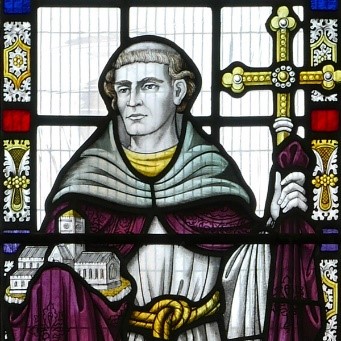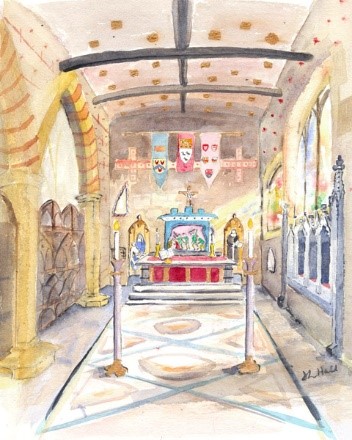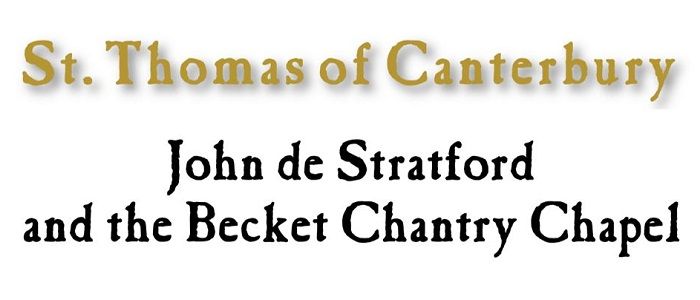 Holy Trinity’s medieval Becket Chantry Chapel was built in 1331 by John de Stratford for the offering of prayers in perpetuity for himself, the souls of his parents, brother, deceased English kings and Bishops of Worcester and Winchester and all the departed faithful.
Holy Trinity’s medieval Becket Chantry Chapel was built in 1331 by John de Stratford for the offering of prayers in perpetuity for himself, the souls of his parents, brother, deceased English kings and Bishops of Worcester and Winchester and all the departed faithful.
Until Shakespeare achieved fame, de Stratford was without question the town’s most celebrated son. He served the ill-fated Edward II, and rose from Rector of Holy Trinity to become Archbishop of Canterbury in 1333, during the reign of Edward III. Like Thomas Becket, he challenged royal authority, but unlike Becket, he survived, concentrating his final years on spiritual duties as Archbishop, until his death in 1348. He is buried at Canterbury Cathedral, close to the site of Becket’s martyrdom.
 The Holy Trinity chantry attracted so many pilgrims from Stratford and further afield, that John’s kinsman, Ralph de Stratford, founded the ecclesiastical college in 1353, to provide accommodation for the increased number of priests required to serve the chapel.
The Holy Trinity chantry attracted so many pilgrims from Stratford and further afield, that John’s kinsman, Ralph de Stratford, founded the ecclesiastical college in 1353, to provide accommodation for the increased number of priests required to serve the chapel.
Eventually the College became so powerful and wealthy that it took control of the whole church, collecting the tithe money and appointing its priests. It thrived until the 1538 edict of Henry VIII de-canonised Becket, followed in 1547 by Edward VI’s Chantries Act, which abolished all chantries and colleges.
For a visualisation of how the chapel might have looked in its heyday, click here.
For a more detailed article on John de Stratford and the Chantry Chapel, click here.
For the exhibition display board, click here.

 Holy Trinity’s medieval Becket Chantry Chapel was built in 1331 by John de Stratford for the offering of prayers in perpetuity for himself, the souls of his parents, brother, deceased English kings and Bishops of Worcester and Winchester and all the departed faithful.
Holy Trinity’s medieval Becket Chantry Chapel was built in 1331 by John de Stratford for the offering of prayers in perpetuity for himself, the souls of his parents, brother, deceased English kings and Bishops of Worcester and Winchester and all the departed faithful.  The Holy Trinity chantry attracted so many pilgrims from Stratford and further afield, that John’s kinsman, Ralph de Stratford, founded the ecclesiastical college in 1353, to provide accommodation for the increased number of priests required to serve the chapel.
The Holy Trinity chantry attracted so many pilgrims from Stratford and further afield, that John’s kinsman, Ralph de Stratford, founded the ecclesiastical college in 1353, to provide accommodation for the increased number of priests required to serve the chapel.

